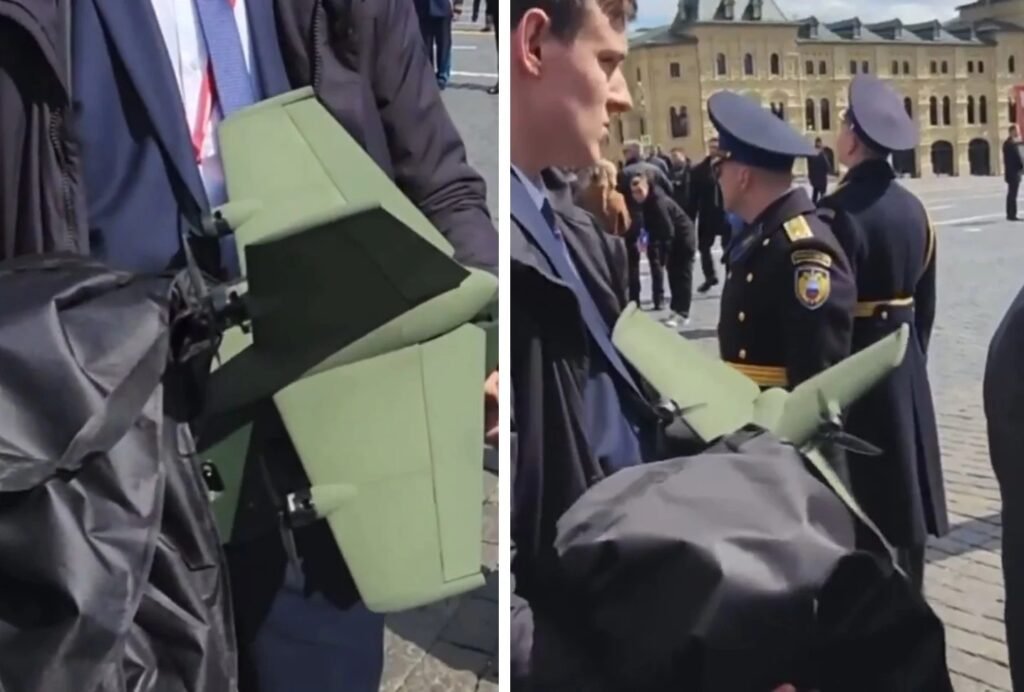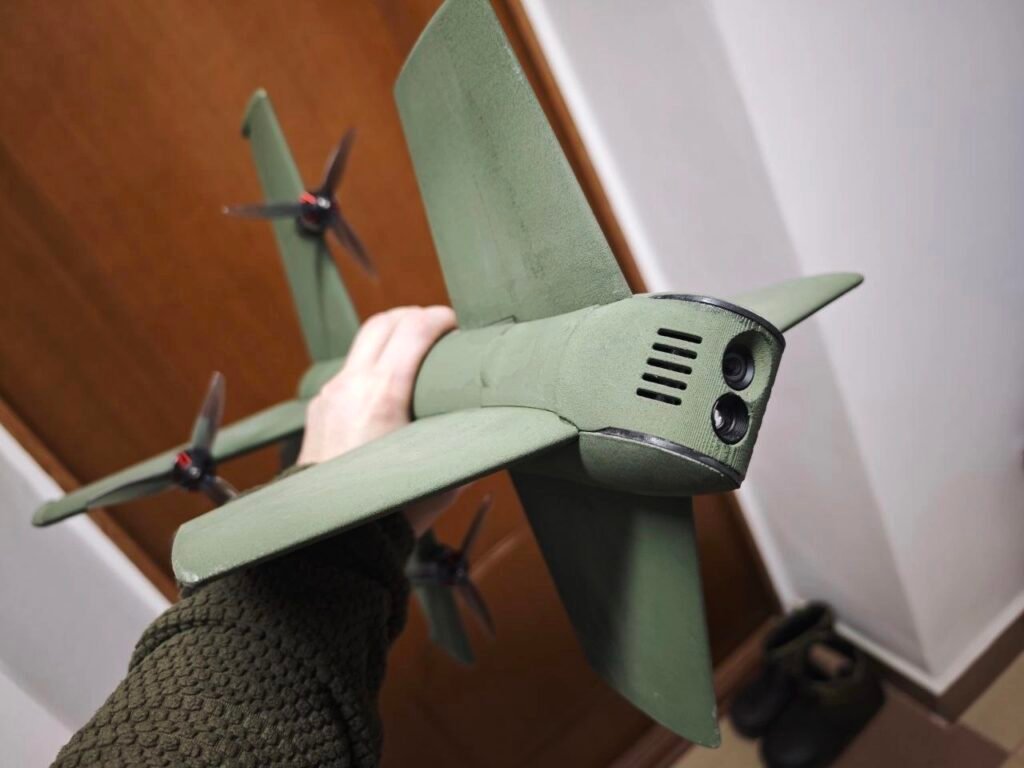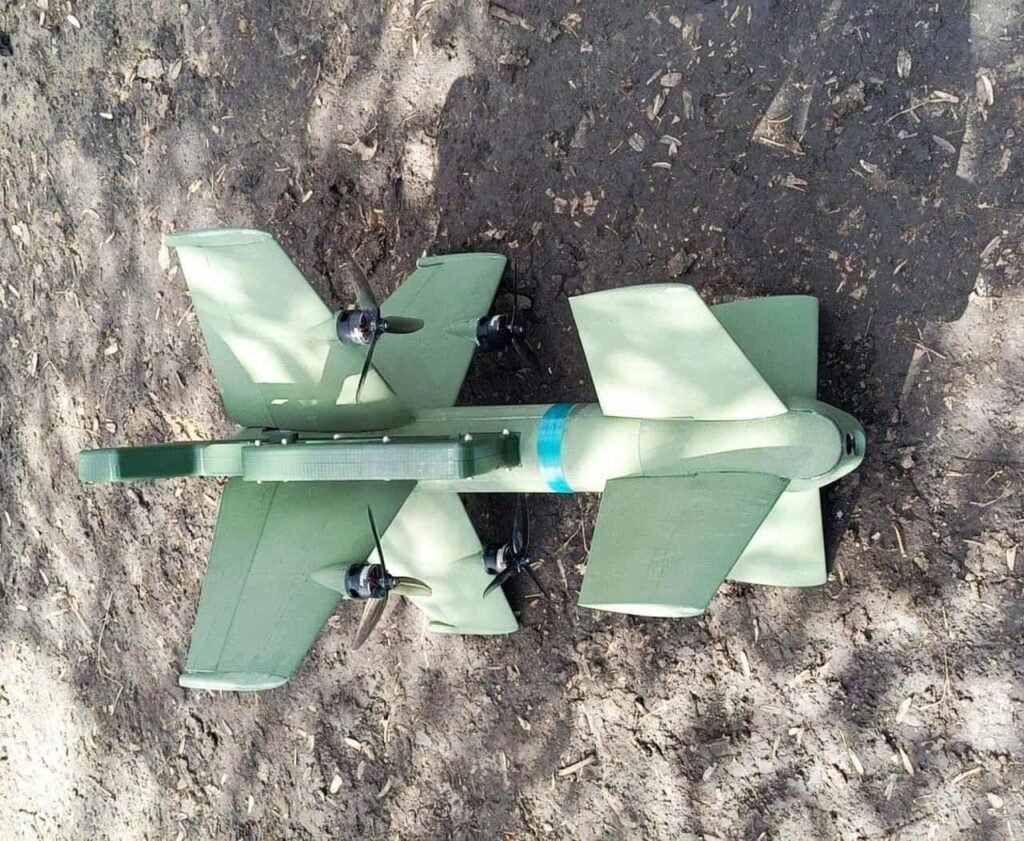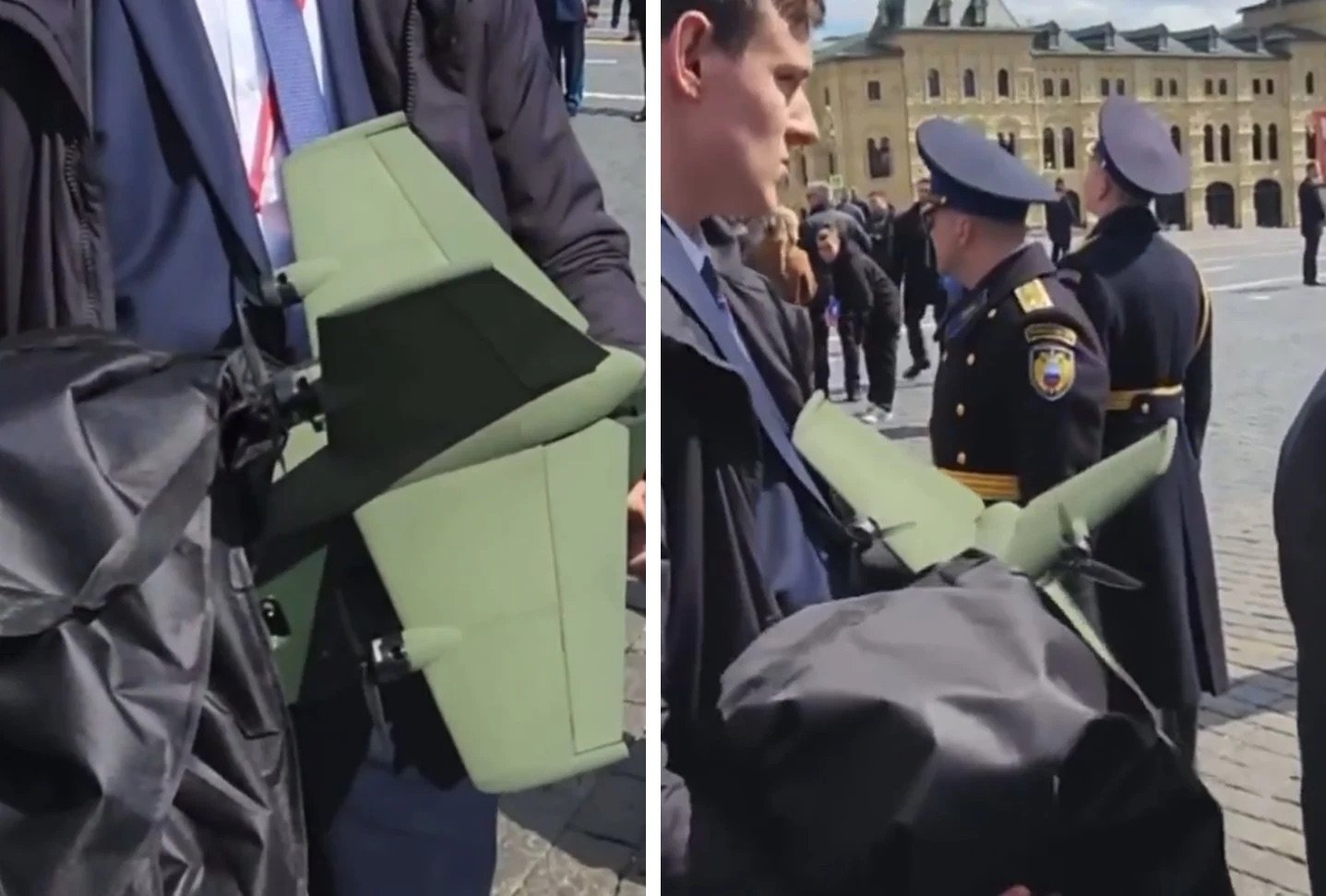Guardian in the Air: Putin’s Security Deploys Anti FPV Interceptors
Guardian in the Air: Putin’s Security Deploys Anti FPV Interceptors
In a clear indication of the escalating drone threat, even at the highest levels of state security, Russian President Vladimir Putin’s personal protection detail was recently observed in St. Petersburg fielding what appears to be a cutting-edge, infantry-operated FPV (First-Person View) drone specifically designed to neutralize hostile unmanned aerial systems. This unprecedented public sighting of such a sophisticated, portable counter-UAV platform within a presidential security entourage highlights Russia’s proactive measures to combat the growing menace of small, tactical drones.

The drone’s presence, despite attempts by a security officer to conceal it, drew immediate attention due to its distinctive size and X-shaped, four-motor cross configuration. Observers noted its dual-sensor targeting system, comprising both thermal imaging and television-guided seeker heads. This advanced payload suggests the drone’s capability to operate effectively in low-visibility conditions, including night-time and adverse weather, significantly enhancing its operational scope against stealthy aerial threats.

The Dawn of the Soldier-Carried Drone Interceptor /Anti FPV Interceptors
The concept of a soldier-carried drone interceptor represents a significant leap in close-protection capabilities. Traditionally, anti-drone measures have often involved larger, fixed-site jammers or more complex air defense systems. However, the proliferation of small, commercially available, and often modified FPV drones for surveillance and attack purposes has created a critical need for agile, immediate-response solutions that can be deployed by individual security personnel.

This newly observed Russian system appears to fit that niche perfectly. Its design philosophy emphasizes portability and rapid engagement. The reported operational sequence underscores this: an operator manually directs the drone in its initial targeting phase, and once a target is acquired and locked on, the system transitions to autonomous flight, tracking and engaging the object without further direct human input. This semi-autonomous functionality allows for swift reaction times, crucial in defending against fast-moving and unpredictable drone threats.
Stealth and Resilience: A Dedicated Command Channel / Anti FPV Interceptors
One of the most noteworthy features attributed to this new interceptor is its reported use of a dedicated command and telemetry channel, rather than standard radio frequencies. This is a critical design choice aimed at enhancing the system’s resilience against electronic warfare (EW) and signals intelligence (SIGINT) efforts. By avoiding common frequencies, the drone makes it significantly harder for adversaries to detect the operator’s location or to jam the drone’s control signals. In an environment where electronic warfare is increasingly sophisticated, this “off-grid” communication capability provides a distinct advantage, ensuring the integrity of the counter-drone operation.
A Response to an Evolving Threat Landscape
The public debut of this FPV interceptor alongside President Putin comes amidst heightened concerns within the Russian security establishment regarding drone threats on domestic soil. The conflict in Ukraine has dramatically underscored the effectiveness of FPV drones for tactical strikes, with numerous reports of their use by Ukrainian forces against Russian infrastructure and military assets deep inside Russian territory.
This increasing sophistication and reach of small UAVs pose a formidable challenge for VIP protection. Traditional security perimeters, while effective against ground-based threats, can be vulnerable to airborne incursions, especially from agile, low-flying drones that can be difficult to detect with conventional radar systems. The deployment of a compact, portable counter-UAV platform directly in the hands of a presidential guard signals a significant shift in defensive strategy, moving towards more immediate, mobile, and localized drone defense solutions.
The Russian Federal Protective Service (FSO) and Emerging Technologies
While the Russian Federal Protective Service (FSO) has not officially acknowledged the existence or specifications of this new system, its presence at a high-profile event involving the president strongly suggests that Moscow is actively incorporating cutting-edge counter-drone technologies into its close-protection toolkit. This aligns with broader trends in military and security development, where nations are investing heavily in anti-UAV systems, ranging from electronic jammers and laser weapons to directed energy systems and kinetic interceptors.
The FSO, responsible for the security of high-ranking officials and sensitive installations, continually adapts its methods and equipment to counter emerging threats. The FPV interceptor likely represents a rapid response capability for scenarios where larger, fixed air defense systems might be impractical or insufficient. It fills a critical gap, providing an on-the-spot solution to neutralize immediate aerial threats, particularly in urban or confined environments.
Implications for VIP Protection and Urban Security/ Anti FPV Interceptors
The sighting of Putin’s anti-drone FPV interceptor has broader implications for VIP protection and urban security strategies worldwide. It underscores the undeniable reality that small, inexpensive drones have democratized air power, making every public appearance or gathering a potential target. Security forces globally are now facing the complex challenge of defending against this pervasive threat.
This new Russian system showcases a proactive approach, emphasizing rapid detection, tracking, and neutralization of hostile drones at close range.
It is a testament to the ongoing arms race in the skies, where advancements in offensive drone capabilities are met with equally rapid innovations in counter-drone technologies. The deployment of such a system highlights that the Kremlin views the threat from airborne drones as not just theoretical, but immediate and credible, even in environments previously considered inherently secure. As drone technology continues to evolve, so too will the methods employed to defend against them, with portable, intelligent interceptors likely playing an increasingly vital role in safeguarding critical assets and personnel.
Source: ragex.co
Anti FPV Interceptors







